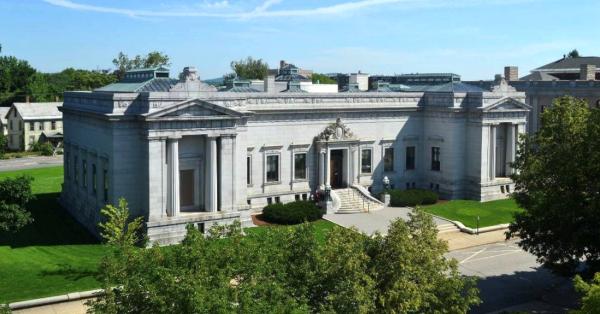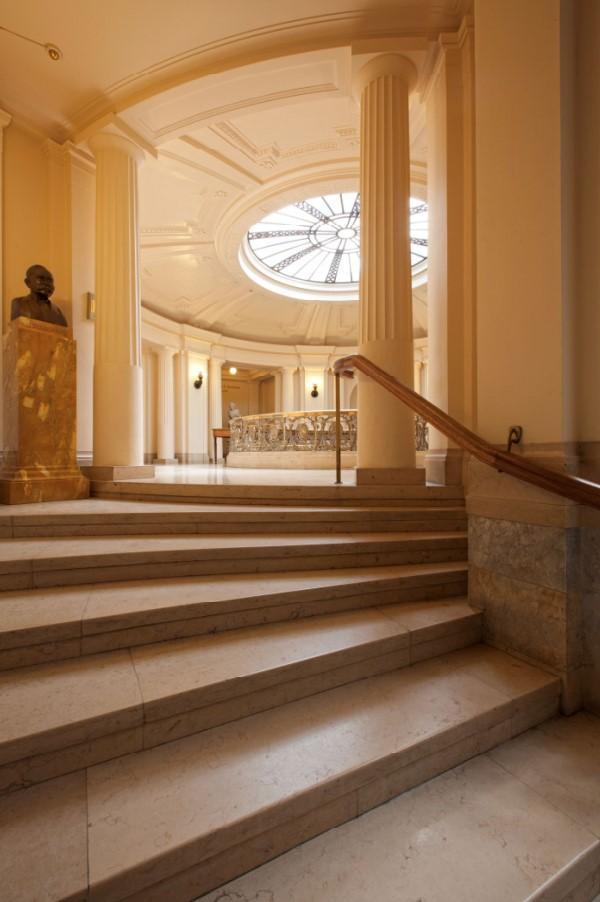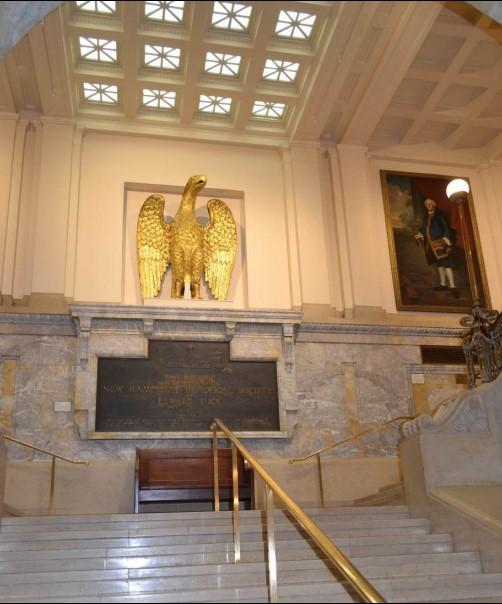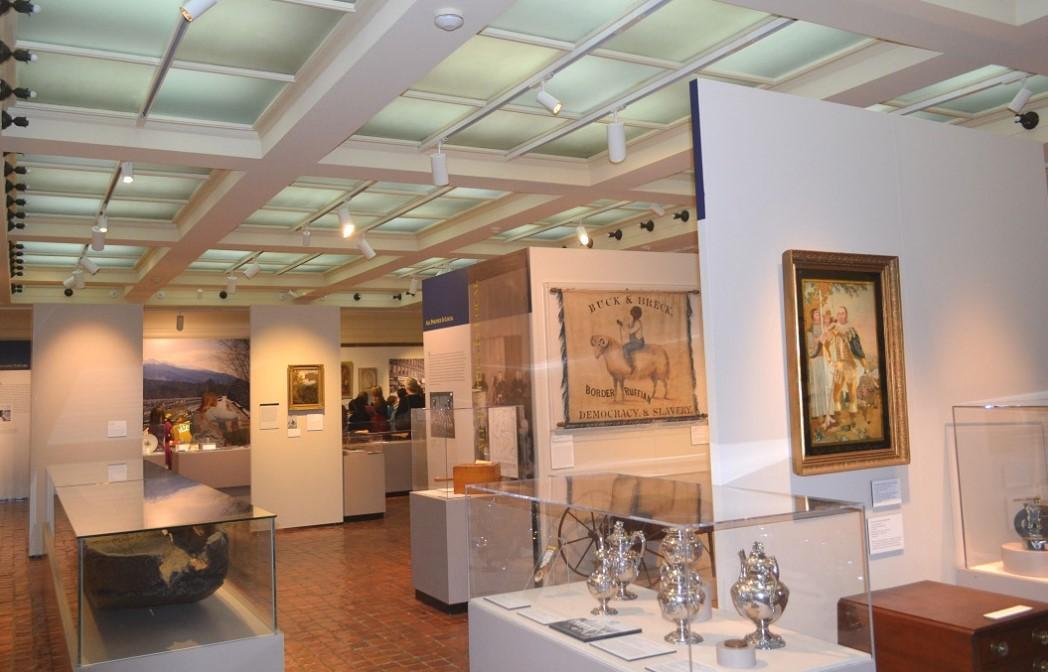In With the Old and the New: Improving Environmental Conditions at the New Hampshire Historical Society

Exterior photograph of the New Hampshire Historical Society’s headquarters, as seen from a neighboring building after the skylight insulation project.
Courtesy of the New Hampshire Historical Society.

Exterior photograph of the New Hampshire Historical Society’s headquarters, as seen from a neighboring building after the skylight insulation project.
Courtesy of the New Hampshire Historical Society.
On June 13, 2023, the New Hampshire Historical Society celebrated its 200th birthday. Since 1911, the two-story classical building in Concord, N.H., has provided library stacks, an exhibition gallery, circulation spaces, and collections storage. Architect Guy Lowell conceived its array of eleven glazed rooftop skylights to allow for natural illumination and aid the building’s ventilation. Skylights, along with chandeliers, standards, bronze ceiling lights, brackets, and hidden electric lights, exemplify the sophistication of the structure’s design and technology.
A study completed in 1994 revealed that seasonal temperatures in the second-story book stacks ranged from 45° to 90° Fahrenheit, and relative humidity fluctuated between 20 percent and 85 percent. These conditions, which fall outside temperature and humidity ranges considered safe for library collections, accelerate the deterioration of materials. A $250,000 challenge grant from the National Endowment for the Humanities enabled the society to install a computer-controlled HVAC system in 1996. Assessments from 2010, 2011, and 2013 documented additional hazards posed by the building’s aging heating, ventilation, and lighting systems. In 2014, the New Hampshire Historical Society received a Sustaining Cultural Heritage Collections: Preventive Conservation Implementation II grant to improve internal environmental conditions for approximately 32,000 museum artifacts, 200,000 photographs, and 50,000 books and pamphlets without compromising character-defining features of the National Register-listed headquarters.
The society identified three priorities that would both decrease the building’s carbon footprint and fortify the long-term preservation of its collections: reducing heat loss and gain through skylights, eliminating ultraviolet radiation that is a component of natural light, and minimizing variations in temperature and climate. The society pursued renovations that took advantage of the original structure’s strengths. These included installing two natural gas-fired hot water boilers, which vent through the original chimney, connected to heat exchangers and air handlers on the basement level. The duct system now delivers climate-controlled air throughout the headquarters. The character of the original skylights has been preserved by inserting thermal barriers with LED light sources attached below, which maintains the appearance of natural daylight, excludes virtually all ultraviolet radiation, and stops heat loss in the winter and heat gain in the summer.
These changes do not affect the architecture’s aesthetic or visitors’ experiences, but they do improve the environmental stability of the collections spaces and thereby promote their longevity. The collections include 35,000 museum objects, 2 million pages of manuscripts, 250,000 photographic items, and 3,000 maps. Such materials publicly record New Hampshire’s achievements in exploration and settlement, handicrafts and manufacturing, agriculture and forestry, trade and transportation, and social and political history.
Following the completion of the renovations, the historical society measured the effectiveness of its strategies. The rooms and galleries of the second floor register ultraviolet readings of 0.00 microwatts per lumen (µW/lm); previously, the intensity in the same areas reached 94 µW/lm. Prior to the placement of new climate-control equipment and controls, the maximum seasonal temperature fluctuation throughout the building ranged from 55° to 85° Fahrenheit and the seasonal relative humidity (RH) ranged from 4 percent to 82 percent. The first year of monitoring, ending on September 30, 2016, recorded a temperature range of 66° to 74° Fahrenheit and an RH range of 27 percent to 58 percent. These conditions provide a preservation environment for the collection objects.
A primary goal of SCHC projects is to encourage environmental sustainability and resilience among collecting institutions. In the first year after its renovations, the New Hampshire Historical Society saw a carbon footprint reduction of 77 percent. The society’s success attests that prioritizing sustainability and preserving historical character are complementary, not contradictory, processes.
To read the society’s own reflection on the project, lessons learned, and data collection, please reference its white paper.
Dana Blatte, an undergraduate studying cultural anthropology and creative writing at Hamilton College, was an intern in the NEH Division of Preservation and Access during the summer of 2023.


